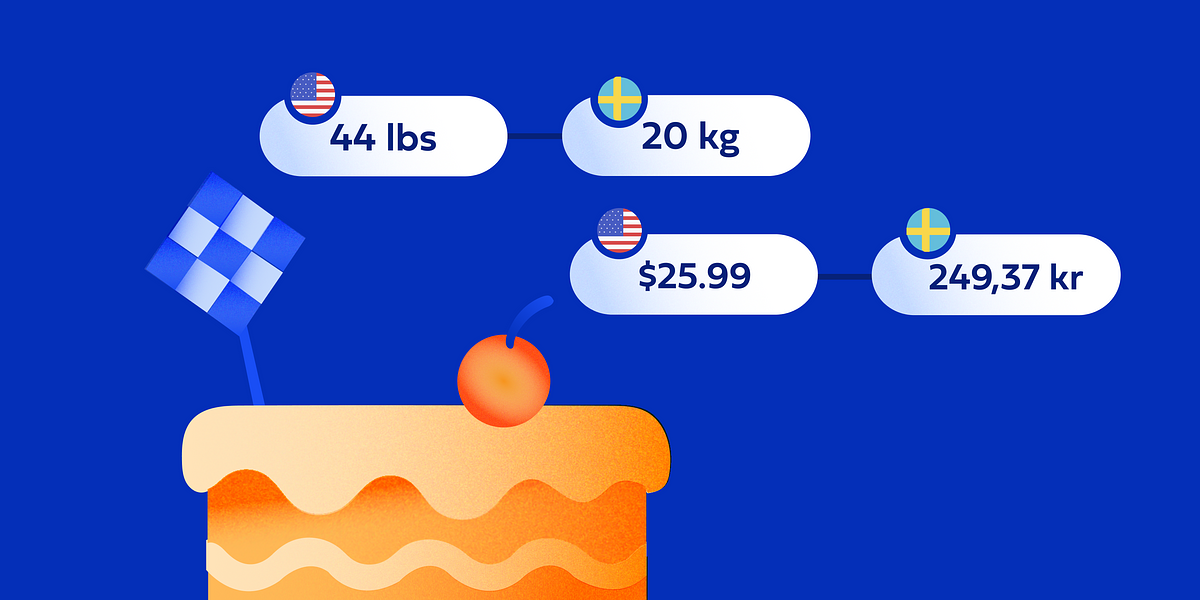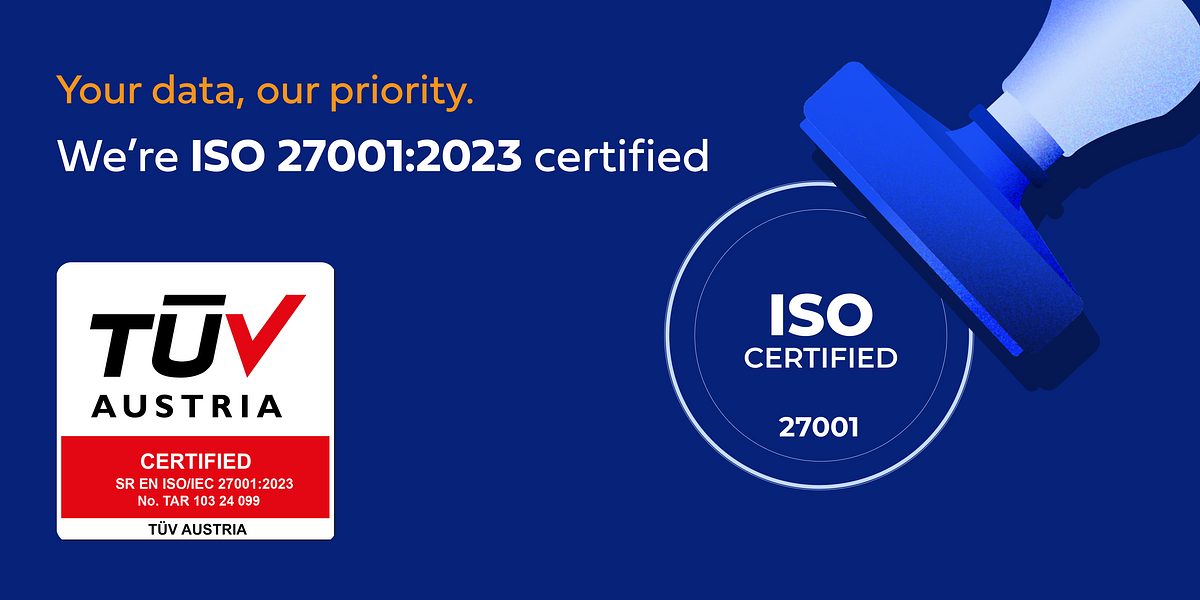
From App Store to global market: A guide to seamless mobile app localization
The mobile app economy has reached unprecedented scale, with global revenues surpassing $150 billion in 2024 across in-app purchases, subscriptions, and paid downloads. Yet despite this massive market opportunity, countless developers continue to limit their reach by launching exclusively in English, missing out on billions of potential users worldwide.
App localization is a strategic business decision that can transform a regional startup into a global powerhouse. The process revolves around comprehensive adaptation of user interfaces, optimization of app store metadata, and cultural calibration that makes foreign software feel familiar and trustworthy to local users.
In this article, we'll explore the strategic foundations of effective app localization, from initial market research and technical implementation to ongoing optimization strategies that drive sustainable international growth. Whether you're launching your first localized app or scaling existing localization efforts, this comprehensive guide provides the frameworks and insights needed to transform your mobile application into a truly global product.
Why mobile app localization matters
Mobile app localization isn't just a nice-to-have anymore—it's a business necessity that delivers results you can measure. The data is clear: apps that speak users' languages don't just perform better, they dominate their markets.
The numbers tell the story. Localized apps consistently outperform English-only alternatives across every metric that matters. App store metadata and descriptions in local languages dramatically improve organic discovery, making it easier for users to find your app without paid advertising. Engagement rates climb when users interact with applications in their native language, leading to longer sessions and more meaningful interactions.
What's particularly striking is the quality difference. Properly localized apps receive higher ratings and more favorable reviews than those relying on machine translation. Both the Apple App Store and Google Play show consistent patterns: comprehensive localization strategies drive sustained download growth.
Market penetration accelerates in emerging markets, where smartphone adoption is exploding. Apps supporting local languages capture market share much faster than English-only competitors. The reason is simple: most consumers spend significantly more time on apps presented in their native language, and many consider local language support more important than price when choosing new software.
Cultural adaptation drives retention. Effective localization goes beyond language, addressing local holidays, payment preferences, and communication styles. Apps that reflect these cultural nuances build trust and loyalty, resulting in higher monthly active user rates and more sustainable revenue streams.
Understanding your localization strategy
Strategic app localization requires methodical planning that balances opportunity against resources. The most successful developers approach international expansion through systematic market analysis, establishing clear priorities that maximize return on localization investment while minimizing operational complexity.
Planning your target markets
Market research fundamentals start with competitor analysis. Identify underserved segments where your application category shows strong demand but limited local language support. This gap analysis reveals opportunities that competitors have missed.
Revenue potential assessment should prioritize markets based on smartphone penetration rates, app store spending patterns, and cultural alignment with your application's core value proposition. With 5.81 billion smartphone users worldwide as of April 2025, representing 70.7% of the global population, opportunities exist across diverse markets.
Cultural compatibility analysis evaluates how cultural differences might impact user interface design, feature preferences, and monetization strategies. What works in Silicon Valley might flop in Seoul, not because of language barriers but because of fundamentally different user expectations.
Regulatory considerations matter more than most developers realize. Data privacy requirements, content restrictions, and platform-specific compliance standards can significantly influence your localization process.
Defining your app localization approach
The spectrum between minimum viable localization and full app localization offers multiple entry points for resource-conscious developers. Minimum viable localization focuses exclusively on app store metadata and critical user-facing text, enabling rapid market entry with controlled investment.
Full app localization encompasses comprehensive adaptation including complete app UI translation with cultural adaptation of visual elements, localization testing across all supported features, integration with localization tools for ongoing content management, and app store localization optimization for enhanced discoverability.
Resource allocation requires realistic planning. Budget 15-25% of development costs for initial localization efforts, with ongoing maintenance representing 5-8% of monthly operational costs. Determine whether internal teams or external localization services partnerships better align with long-term expansion goals.
Technology integration shouldn't be an afterthought. Evaluate localization management platforms that streamline translation process workflows and reduce time-to-market for new markets.
Technical essentials of app localization
The technical infrastructure supporting mobile app localization varies significantly between platforms. Developers must navigate distinct frameworks while maintaining consistency across iOS app localization and Android app translation implementations.
iOS app localization essentials
App Store Connect configuration establishes localization settings that manage multiple languages efficiently, ensuring proper app store metadata distribution across target markets. Resource file management implements .strings files and .storyboard localization that automatically adapt your app's user interface based on device language settings.
Xcode integration leverages built-in internationalization tools to streamline resource file organization and maintain version control across localized content. App Store Optimization configures app previews, screenshots, and promotional materials that align with Apple's localization guidelines while maximizing app visibility in regional stores.
Android app translation framework
Google Play localization requirements navigate Google Play Console's localization features to optimize app store localization performance and enhance app discoverability across different languages. String resource architecture structures Android string resources to support dynamic device language detection while maintaining efficient app content management workflows.
Gradle build configuration implements build variants that automatically generate localized APKs, reducing deployment complexity for different target markets. Material design adaptation ensures user interface elements conform to Material Design principles while accommodating text expansion and cultural design preferences.
Cross-platform considerations
Unified content management deploys localization tools that synchronize content updates across both platforms, minimizing discrepancies in translation quality and user experience. Testing infrastructure establishes localization testing protocols that validate functionality across both Android and iOS implementations before app release.
Version control strategy maintains consistent app localization process workflows that accommodate platform-specific requirements while preserving unified brand messaging. This technical foundation enables scalable localization efforts that support sustainable international expansion while maintaining operational efficiency across diverse mobile ecosystems.
Key components of effective app localization
Successful, effective app localization demands comprehensive attention to both visible and invisible elements that shape user experience. The most impactful localization strategies address interface adaptation, content optimization, and cultural alignment simultaneously, creating cohesive experiences that resonate with local users across different target markets.
User interface and app UI considerations:
- Text expansion management: Account for 30-40% text expansion when translating from English to languages like German or Finnish, ensuring your app UI maintains visual hierarchy without compromising functionality
- Cultural visual adaptation: Modify color schemes, imagery, and iconography to align with local cultural preferences—red signifies luck in Chinese markets but danger in Western contexts
- Layout flexibility: Design user interface frameworks that accommodate right-to-left languages like Arabic and Hebrew while preserving intuitive navigation patterns
- Typography selection: Choose fonts that support local character sets and maintain readability across different languages, particularly for complex scripts like Thai or Hindi
App store metadata optimization:
- Strategic keyword integration: Research local search terms that local users employ when discovering apps in your category, optimizing app descriptions for regional search behavior patterns
- Compelling App Title Localization: Adapt your app name and app title to reflect local naming conventions while maintaining brand recognition and search optimization
- Visual Asset Localization: Create app previews and screenshots that showcase localized content, demonstrating immediate value to potential users browsing in their native language
- Review Response Strategy: Monitor and respond to app reviews in local languages, building community trust that enhances app store optimization performance
Content and functionality localization:
- Contextual Content Adaptation: Translate app text and in app messaging with cultural context, ensuring humor, references, and calls-to-action resonate with target markets
- Feature Customization: Adapt functionality to match local preferences—payment methods, social sharing platforms, and communication styles vary significantly across regions
- Quality Assurance Protocols: Implement rigorous translation quality standards that prevent translation errors from undermining user trust and app engagement
- Ongoing Content Management: Establish workflows for updating localized content during regular app release cycles, maintaining consistency across all supported languages
This approach ensures that localized apps deliver authentic experiences that drive sustainable app downloads and long-term user retention across international markets
The bottom line
App localization has become a critical differentiator in the global mobile app market, enabling developers to reach new audiences, boost downloads, and foster lasting user engagement. By moving beyond simple translation and embracing cultural adaptation, strategic app store optimization, and technical best practices, developers can transform their apps into trusted solutions for users around the world.
The evidence is clear: investing in localization delivers tangible business benefits, from increased app visibility and higher ratings to stronger retention and revenue growth. As smartphone adoption continues to rise in both established and emerging markets, supporting multiple languages and local preferences is no longer optional—it’s essential for competing in today’s crowded app stores.
By following a structured localization process, leveraging the right tools, and prioritizing quality at every stage, app developers can unlock the full potential of their products on a global scale. Whether you’re preparing for your first international launch or refining your existing localization strategy, the path to sustainable growth starts with making your app accessible, relevant, and engaging for every user, everywhere.
FAQ
Why is mobile app localization important?
Mobile app localization is important because it boosts downloads, user engagement, and app store rankings. Apps in local languages outperform English-only versions, especially in emerging markets, where users prefer native-language content. Proper localization also improves retention, trust, and revenue growth.
What are the key steps in app localization strategy?
Key steps in app localization strategy include market research, UI translation, app store metadata optimization, and cultural adaptation. Developers must assess target markets, align features with user behavior, and integrate localization tools to ensure consistent and scalable international growth.
How does localization improve app store performance?
Localization improves app store performance by enhancing visibility through keyword-optimized metadata, translating app titles and descriptions, and localizing screenshots. Apps with localized listings rank higher in local searches, receive better reviews, and convert more users browsing in their native language.
What technical practices are essential for app localization?
Essential technical practices for app localization include supporting text expansion, managing string resources, and adapting UI for different languages. Developers should configure App Store Connect, Xcode, or Gradle to handle localization, ensuring consistency across iOS and Android platforms.
How should apps be culturally adapted for localization?
Apps should be culturally adapted by modifying visuals, icons, and features to reflect local preferences. This includes changing color meanings, translating humor appropriately, adjusting payment options, and aligning UX with cultural expectations to build trust and improve user retention.
About Travod
Travod is a global provider of expert language services and agile technology solutions for businesses worldwide, and part of the Mondia Technologies Group. Providing culturally localised content, Travod offers a full range of translation services in 100+ languages. Our international team of 130 in-house employees and over 5,000 specialist linguists work together to provide a bespoke service for more than 6,000 organisations and brands. Travod is fully ISO 9001, ISO 17100, ISO 18587 and ISO 27001 certified, demonstrating its ongoing commitment to the highest standards of quality in the translation industry.
Subscribe for more
Stay up to date with the latest articles, news and translation insights


